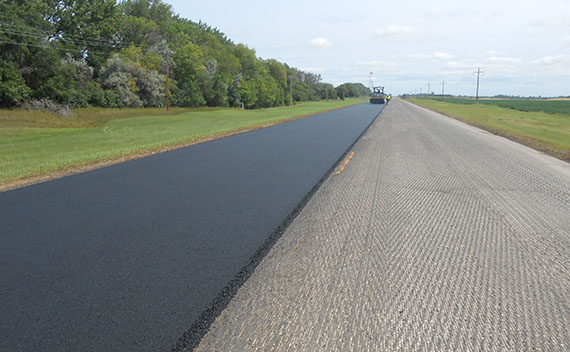Asphalt overlay is a commonly used technique in pavement maintenance. It can help to extend the lifespan of asphalt surfaces while improving aesthetics and functionality. However, a common question arises: Can an asphalt overlay be performed without milling the pavement first? To answer this question, it’s essential to understand the processes involved in an asphalt overlay and the implications of skipping the milling phase.
What is Asphalt Overlay?
Asphalt overlay involves applying a new layer of asphalt over an existing pavement surface. This process is designed to repair distresses like cracks, ruts, and surface wear, thus rejuvenating the pavement. Typically, an overlay can extend the life of the pavement by addressing these issues and providing a durable new surface. However, the method of application can significantly impact its effectiveness.
The Role of Milling
Milling is the initial step in many asphalt overlay projects. It involves removing the top layer of existing asphalt, typically 1 to 2 inches, using specialized machinery. This process does more than just prepare the surface for a new layer, it also addresses several important factors:
- Surface Preparation: Milling creates a rough texture that improves the bonding between the old asphalt and the new layer. This ensures that the overlay adheres properly, enhancing its durability.
- Elimination of Distresses: By removing the damaged top layer milling can eliminate ongoing issues such as cracking and raveling. If these problems are left unaddressed, they can propagate through the new layer, leading to premature failure.
- Maintaining Proper Drainage: Milling allows for the adjustment of the pavement thickness, which helps maintain proper drainage and prevents water pooling, a common cause of pavement deterioration.
Can You Overlay Without Milling?
While asphalt overlays can technically be applied without milling, doing so is not typically recommended for several reasons:
- Reduced Bond Strength: Without milling, the bond between the old and new asphalt may not be as strong. A smooth surface may not provide the necessary texture for optimal adhesion, which can lead to issues such as delamination—where the new layer begins to separate from the old one.
- Increased Risk of Pre-existing Issues: Without milling to remove the distressed top layer, existing problems such as cracks or surface deformities can continue to affect the newly applied asphalt. This can result in the rapid deterioration of the overlay, negating its intended benefits.
- Potential for Moisture Trapping: If milling is not performed, any moisture trapped in the old asphalt can rise to the surface and create problems such as swelling or buckling in the overlay.
- Shortened Lifespan of the Overlay: Ultimately, not milling can lead to a shorter lifespan for the overlay compared to a properly milled surface. This can lead to costly repairs sooner than anticipated.
When Can Asphalt Overlay Be Done Without Milling?
There are specific scenarios where an overlay can be applied without milling. If the existing pavement is in relatively good condition with minimal distress, surface preparation techniques like crack sealing or patching may be sufficient before applying the overlay. However, this approach should be considered carefully and usually requires a professional evaluation.
While it is possible to perform an asphalt overlay without milling the pavement first, it is generally not advisable due to the risks involved. In most cases, it is recommended to both mill and overlay asphalt. Milling serves critical functions in preparing the surface, enhancing bond strength, and eliminating pre-existing issues that could undermine the effectiveness of the overlay. To achieve the best results, including durability and longevity, it is recommended to go through the milling process before applying an asphalt overlay.
When considering an overlay project. and if located in the greater Denver Metro area, The first step is to consult with local, quality paving Colorado experts such as M5 Paving to evaluate the specific situation and determine the most effective maintenance solution for the asphalt surface in question. In the long run, investing in proper procedures will save time, money, and frustration, ensuring a smooth and durable pavement that can withstand the test of time. Reach out to one of our M5 Paving team members today!



